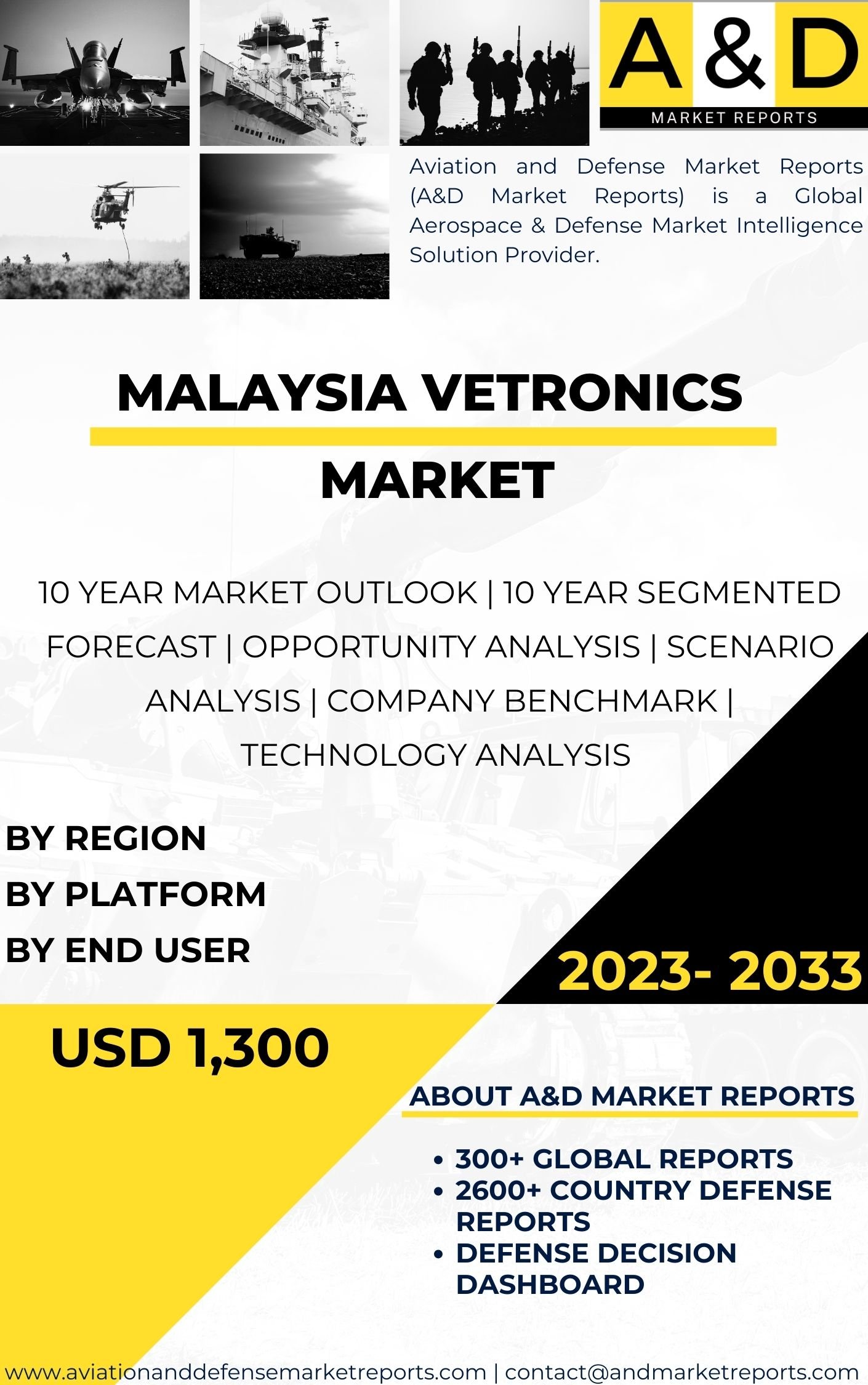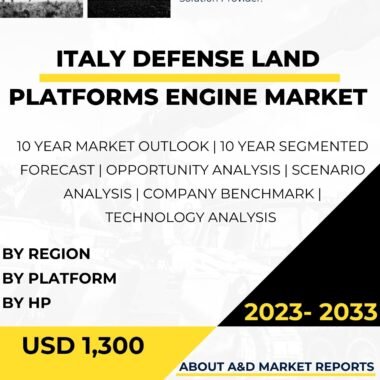Description
The Vetronics market in Malaysia has experienced significant growth and development in recent years, reflecting the country’s commitment to modernizing its defense capabilities and adopting advanced technologies to enhance the performance of its military vehicles. Vetronics, short for Vehicle Electronics, refers to the integration of various electronic systems and technologies within military vehicles to improve their mobility, situational awareness, firepower, and survivability on the battlefield. The adoption of state-of-the-art Vetronics solutions enables Malaysia to establish a modern and effective fleet of military vehicles, contributing to the country’s overall defense preparedness and operational effectiveness.
As a nation with strategic geopolitical importance in Southeast Asia, Malaysia faces diverse security challenges, including potential threats from hostile forces and the need to maintain a capable and agile military. The use of advanced Vetronics systems allows Malaysia to enhance the capabilities of its military vehicles, improve communication and coordination among units, and increase the lethality and survivability of its armored fleet.
The Vetronics market in Malaysia has witnessed significant technological advancements. Modern Vetronics systems include a wide array of technologies, such as sensors, cameras, displays, communication networks, computing units, and fire control systems. These technologies are integrated seamlessly into military vehicles, providing real-time data, enhancing crew situational awareness, and facilitating the rapid decision-making process during operations.
Moreover, Vetronics plays a pivotal role in the capabilities of the Malaysian Armed Forces. The Malaysian Army, Royal Malaysian Navy, and Royal Malaysian Air Force utilize Vetronics systems in their respective fleets of combat vehicles, naval vessels, and aircraft. Vetronics enhances the capabilities of these platforms, providing critical support to ground and naval forces, and improving the overall operational efficiency and effectiveness of military missions.
Additionally, the adoption of advanced Vetronics solutions supports Malaysia’s commitment to enhancing its defense industrial base and fostering indigenous defense capabilities. The Malaysian government has shown interest in developing and manufacturing Vetronics systems through local research and development (R&D) initiatives and partnerships with global defense companies.
The Malaysian government has recognized the importance of international collaborations in acquiring and developing Vetronics technologies. Partnerships with leading global defense contractors and Vetronics system manufacturers have facilitated access to cutting-edge technologies and expertise. These collaborations have enabled technology transfer and capacity building, contributing to the growth of Malaysia’s domestic Vetronics capabilities.
While the Vetronics market in Malaysia shows promise, it is not without challenges. One of the primary hurdles is the high cost of acquiring and integrating advanced Vetronics systems into military vehicles. These sophisticated electronic systems require significant investment in research, development, procurement, integration, training, and logistical support. Budget constraints may impact the pace and scale of Vetronics adoption and modernization efforts.
Moreover, ensuring skilled personnel, specialized training, and sufficient maintenance support are essential for maximizing the benefits of Vetronics systems. The Malaysian Armed Forces must invest in continuous training and education to ensure their personnel possess the necessary expertise to operate and maintain Vetronics-equipped platforms effectively and securely.
Additionally, addressing interoperability and compatibility challenges among different Vetronics systems is crucial for successful military operations. Ensuring seamless communication and coordination among various military vehicles and platforms equipped with Vetronics is essential for achieving mission success and gaining the upper hand on the battlefield.
Looking ahead, the Vetronics market in Malaysia is poised for further growth. The government’s commitment to modernizing its defense capabilities, enhancing the lethality and survivability of its military vehicles, and investing in advanced Vetronics technologies will drive continued investments in electronic integration. As Vetronics technologies continue to evolve and demonstrate their effectiveness, they are likely to play an increasingly pivotal role in Malaysia’s defense preparedness and military modernization.
Moreover, Malaysia’s participation in regional security collaborations and joint military exercises will likely influence its Vetronics requirements. As the country seeks to strengthen its position as a key player in regional defense and security cooperation, the demand for advanced Vetronics systems with interoperability and compatibility with allied forces will increase.
In conclusion, the Vetronics market in Malaysia has experienced significant growth and progress. The government’s focus on modernizing its defense capabilities, enhancing the capabilities of military vehicles, and investing in advanced electronic integration technologies has paved the way for the integration of modern Vetronics systems. International collaborations and domestic research efforts have positioned Malaysia as a participant in the global Vetronics technology landscape.
However, challenges related to budget constraints, technology development, training, integration, Vetronics requirements, and engineering expertise must be addressed proactively to sustain and enhance the growth of the Vetronics market in the years to come. By maintaining a modern and effective Vetronics capability, Malaysia can effectively enhance its defense preparedness, improve operational efficiency, and strengthen its overall military capabilities.




